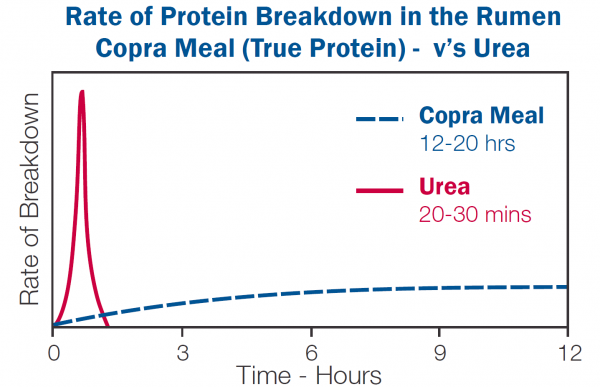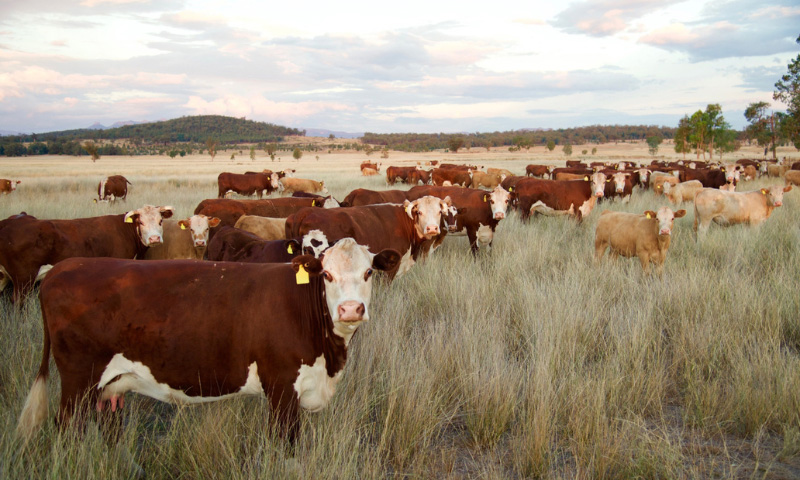The seasonal growth patterns of native and sub-tropical pastures generate wide fluctuations in quantity and quality. With adequate rainfall, a large bulk of feed high in nutritive value is produced, however as growth continues, progressively less energy becomes available to stock due to its decline in digestibility. Protein and mineral content decrease gradually and this drop is accelerated at flowering stage.
When seeds are formed, nutrients from within the plant cells migrate to form the seed heads and to increase the structure of reproductive stalks. The resulting dry standing pasture contains a large amount of fibre composed of cellulose, hemicellulose and lignin, and significantly lower levels of proteins that are mostly bound in the structure.

The fermentative end products of billions of bacteria, protozoa and fungi in the rumen provide most of the energy for cattle and sheep. These microbes and their enzymes break down the fibrous and non-fibrous parts of grass into organic compounds (volatile fatty acids) which are absorbed to provide energy as well as other nutrients to the animal.
For optimum growth and digestive activity, rumen microbes require adequate and constant amounts of protein and minerals such as calcium, phosphorus and sulphur in the diet. Because dry mature pasture is low in these nutrients, especially protein, microbial digestion slows down to the point that stock are unable to consume enough pasture to obtain adequate nutrients to hold condition.
Fortunately, this trend can be reversed with protein supplementation. As protein is the most limiting factor to microbial growth, the ideal protein supplement should contain a source of slowly degradable rumen protein to stimulate rumen microbial reproduction and digestion.
Copra meal is recognised as having high protein rumen ‘bypass’ characteristics. In reality, the amount of copra meal protein degradation in the rumen is quite extensive due to the slow passage of the fermented mature forage out of the rumen. This means that rumen microbes benefit for a number of hours after stock eat small amounts of copra meal.
Protein supplementation needs to be accompanied by a number of minerals to generate microbial growth and animal performance. For example, phosphorus is required by rumen microbes to conserve energy in a very critical molecule called ATP (adenosine triphosphate).
Sulphur can become the limiting nutrient for microbial reproduction because it forms a part of a group of amino acids that are produced by microbes to form proteins.
To ensure that minerals do not become a limiting factor, macro minerals such as calcium, magnesium and sodium and trace elements such as zinc, copper, iron, manganese, cobalt, iodine and selenium should be included in the supplement to cover part of the animal’s daily requirement.
The goal is to provide a supplement with an adequate source of rumen degradable protein and the accompanying minerals for stock grazing dry mature standing pasture. Rumen microbes can now increase their numbers and digest more of the mature forage, liberating more energy per day. As a result, cattle and sheep can significantly increase feed intake and are likely to improve weight gain, reproduction, lactation and/or wool growth.
By Vincent Posada (B Sc, M Ag – Consulting Animal Nutritionist)
